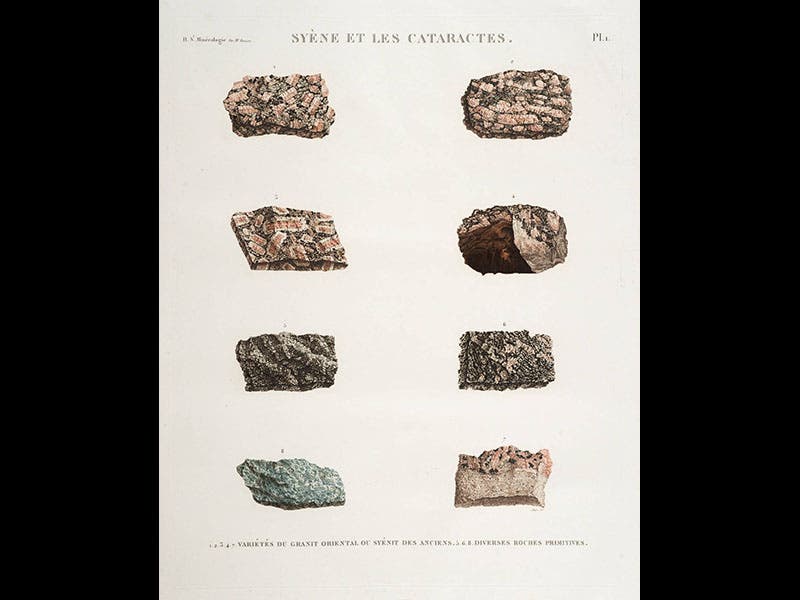Scientist of the Day - François-Michel de Rozière
François-Michel de Rozière, a French mining engineer, was born Sep. 29, 1775. Fresh out of the new School of Mines, he was snared by the organizers of Napoleon's scientific expedition to Egypt in 1798 and sent along as an assistant mineralogist. When his chief, Deodat de Dolomieu, became sick and went home after only 9 months, Rozière was suddenly bumped up to chief mineralogist, at the age of 23. And so he turned his attention to collecting mineral samples from all over Egypt. Upon his return to Paris in 1801, he took charge of writing the volume on minerals for the scientific report on Napoleon’s expedition, the Description de l’Égypte (1809-28). His volume is beautiful, with 115 illustrations of minerals, printed in color, which was unusual for engravings at that time, which were generally hand-colored, if they were colored at all. We reproduce two of the plates above, full-size and then in detail; these plates depict basalts and syenites, the granite-like rocks that are found on the upper Nile near Aswan and were the source for all of Egypt's monolithic obelisks. We displayed this volume in our 2006 exhibition, Napoleon and the Scientific Expedition to Egypt.
One of the perks of being a Napoleonic scientist is that you had your portrait drawn by a skilled portraitist, Andre Dutertre, and then engraved and printed in 1830 in Louis Reybaud's Histoire de l'expedition francaise en Egypte (1830-36). We have this 10-volume set in the Library, crammed with Dutertre portraits of Napoleon’s savants, and we include above, as the fifth image, Dutertre's sketch of Rozière.
Dr. William B. Ashworth, Jr., Consultant for the History of Science, Linda Hall Library and Associate Professor, Department of History, University of Missouri-Kansas City. Comments or corrections are welcome; please direct to ashworthw@umkc.edu.











